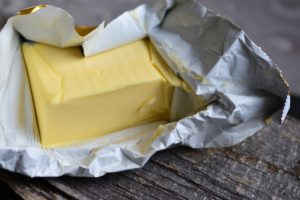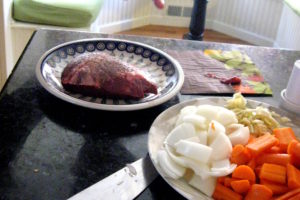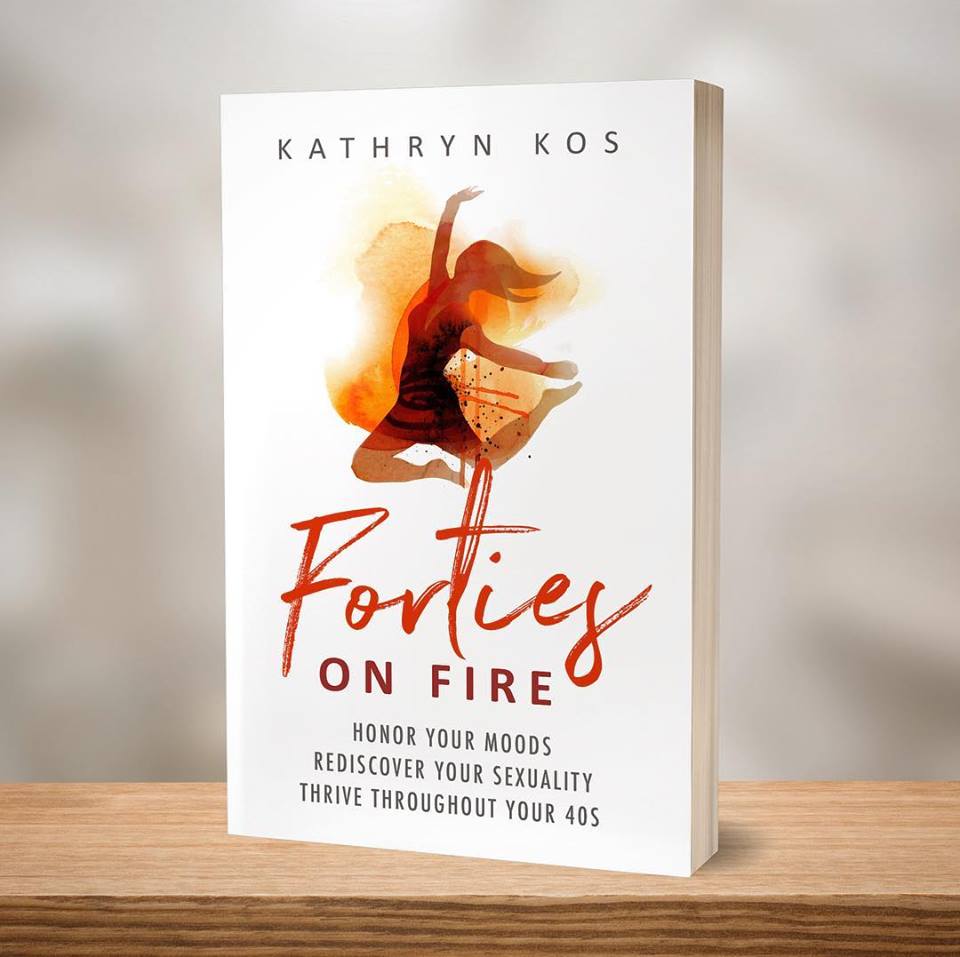One of the most difficult things for us to do is to break free from what has been instilled in our minds. When it comes to traditions such as meals, the types of foods we associate with that meal trail all the way back to our earliest childhood memories. As adults we remember what we were taught about certain foods through family, friends and media. I still remember all the cereal commercials that say “part of a healthy breakfast” Of course this is all about marketing sales and the health claims are false. However, as a child these claims stick with us. In this blog post I discuss the marketing of food in our culture, and misplaced trust.
In my generation fat was demonized. Things like bacon and sausage were seen as heart-disease causing culprits. This was also based on faulty information and the medical community is now realizing this. However, we have a hard time letting go of what we have been taught. This blog post will help with understanding the benefits of having saturated fats in your diet. However, many of us cling to these faulty beliefs. Breakfast really is the most important meal of the day-it is the time to fuel our bodies after fasting over night (break-fast=breaking the fast). So how do we sift through all this information and make the right choices each day?
I’m going to start by discussing cereal. Cereal and breakfast go hand in hand for so many people, and I’m going to explain why cereal is not a good choice for your body. There are many reasons behind this. First of all-cereal is a grain, and grains are broken down into the body as sugar. Yes, you do need carbohydrates in your diet, but there are more nutrient dense sources that will not leave your blood sugar to spike and plummet. Eating a bowl of cereal wreaks havoc on the pancreas.
One of my favorite cereals as a kid was a brand called crackling oat bran (we use to call it cat food cereal because it was shaped like cat food). This cereal is marketed as a “healthy” “whole grain” (another clever marketing scheme) cereal. One “serving” (3/4 cup, give me a break when one eats cereal, they eat at least 1 1/2 cups if not more…double the serving suggestion) has 40 grams of carbohydrates and 18 grams of sugar. Now lets double that because there isn’t anyone sticking to serving portions. You are actually consuming 80 grams of carbohydrates and 40 grams of sugar. Those carbohydrates break down as sugar. Holy sugar rush. What does your body do with all that extra sugar? First of all after the blood sugar spike and plummet you will crash and burn and be super hungry within an hour of eating it. Second, your pancreas gets overworked leading to insulin resistance (which can lead to type 2 diabetes, very prevalent in our culture). Third, the extra carbohydrates are stored in the body as fat.
Cereal grains are highly processed and stripped of nutrients. Then synthetic vitamins are added, and it is labeled as “nutritious”
Saturated fats such as butter, lard, coconut oil have a strong influence on metabolism! These fats help to release insulin. Fat keeps you full longer. Fats are satisfying and satiating. When you avoid fat, you are hungry more frequently. Contrary to what you might think, humans are not designed to snack frequently. However, consuming a high fructose/refined grain and low-fat diet makes you more hungry so you tend to reach for more snacks. You consume more calories just to feel satisfied. Any meal or snack high in carbohydrates like refined grains generates a rapid rise in blood glucose and then insulin to compensate for the rise in blood sugar. The insulin released from eating too many carbohydrates promotes fat and makes it more difficult for your body to shed excess weight, and excess fat, particularly around your belly.
This is only the tip of the iceberg when it comes to cereal. Cereal grains contain anti nutrients. Anti nutrients are the plants natural defense against bugs. It is the plants way of protecting itself from being eaten. Anti-nutrients cause inflammation in the body, inflammation that can lead to chronic diseases. This inflammation can manifest in the body in so many different ways-sore joints, headaches, depression, anxiety, autoimmune diseases, and much more. Soaking and sprouting the grains can help remove some anti-nutrients. However, conventional cereals are factory produced and there is no sprouting or soaking.
Many cereals contain wheat. The newer proteins found in wheat are difficult for our gut to handle. The wheat we are eating now is not the wheat of our ancestors! This article explains some of the newer proteins in modern wheat and the affect these modern grains have on the body. Even oatmeal is most often stored in the same silo as wheat, and therefore can be cross-contaminated with these proteins.
Many people put low-fat or fat free cows milk in their cereal. This is milk that has been stripped of it’s nutrients. Fat is brain food and needed by the body. Here is my blog post on conventional dairy and why I do not give it to my children.
Other reasons to avoid cereal? Genetically modified grains and soy (GMO’s) and food dye’s are found in most conventional cereals. GMO’s have been shown to cause health risks. See study
In a nutshell-although marketed as a healthy breakfast option, cereal is not the way to go! Some people make grain-free hot cereals out of nuts, flax seed, nut butters, other seeds, and fruits.
Another popular “breakfast food’ is eggs! Eggs are amazing nutrient dense powerhouses. Sadly, many people still believe that they must throw away the yolk. The yolk is where all the nutrients are. The yolk contains vitamins A, D, E, and K. It also contains calcium, iron, zinc, and protein. The medical community use to think that eating egg yolks raised cholesterol. We now know that our bodies make cholesterol. Cholesterol from food rarely raises overall cholesterol. We also know that cholesterol is not the culprit in heart disease.
- All of the cells in your body need cholesterol.
- Cholesterol metabolizes all hormones and fat soluable vitamins.
- Your body manufactures most of it’s own cholesterol and a little bit comes from food.
- Cholesterol forms and maintains cell wall structures.
- Cholesterol is used by the nerve cells for insulation.
- The liver uses cholesterol to produce bile.
- Cholesterol is also needed for your body to make Vitamin D.
- Much of what you may think about cholesterol is wrong.
- Cholesterol is found in the arteries, but it is mistaken as the culprit in heart disease. Cholesterol travels to arteries in order to heal the body–as a “patch” to the lesions caused by underlying inflammation. This underlying inflammation is from a diet high in inflammatory foods likes sugars, processed grains, and oxidized oils.
Some people are allergic to eggs (usually the proteins in the egg white) or their guts cannot handle the proteins (particularly people with autoimmune conditions). Therefore egg-free breakfast alternatives are needed.
Let’s break free from traditional breakfast ideas. Think of things you would normally eat for lunch, snacks or dinner. All of these things can be eaten for breakfast. You want to get some good energy to start your day. Fats are brain-food, carbohydrates from vegetable sources and protein will keep you going. Think “real food” ..real food does not come in a package or box.
Here are some non-traditional breakfast ideas (some with eggs and some are egg-free):
One of my children’s favorite breakfasts is leftovers from dinner the night before crisped up in a pan. If you can have eggs, eggs make a great addition to this. So lets say you had steak and sweet potato. Bake an extra sweet potato with dinner and pop it in the fridge with the left over steak. Cut of the steak and pan fry it with some coconut oil, tallow, or lard. Crisp up the sweet potato as well into sweet potato “pancakes”-saute some greens with garlic and you have a meal. The combinations are endless!
Spaghetti squash and meat. If you are crunched for time in the morning cook up the spaghetti squash the night before. It is super easy to bake. Cut it in half, remove the seeds, and place it in a baking dish cut side down with about an inch of water. bake for 30-45 minutes depending on the side of the squash-the squash should scrape right out of the peel into threads like spaghetti. Drizzle with some olive oil or butter and season as you like (I like onion powder). Put some cooked/seasoned grass-fed ground beef on top or leftover meat from the night before cut up and crisped in a pan. You can also put marinara sauce or bolognese sauce right on top of the spaghetti squash (bolognese is a meat sauce). You would just mix the meat into the marinara and put it on top of the spaghetti squash.
Chicken legs with roasted root veggies(carrots, parsnips, potatoes, turnip, onions) and sauteed greens: Chicken legs/thighs/breast are easy to make and the kids love to eat them for breakfast. You can roast the root vegetables right in with the chicken legs, and serve with sauteed greens (my kids love baby broccoli, but any greens would do). For the chicken legs I like to put them in a baking dish with a small amount of water on the bottom. I season them (usually with Trader’s Joe’s 21 spice mix), and put the cut up root veggies in the pan around the legs-as well as a few cloves of chopped garlic. Bake for about 45 minutes at 350. Again, if crunched for time this can be done the night before and re-heated. The greens can be sauteed in fat and seasoned to your taste. I like mine with butter and coconut aminos.
Somewhat traditional breakfast: pastured sausage or bacon, but serve over a bed of greens with a side of fruit. I like to get the bulk breakfast sausage from the local Farmer’s Market. Fry it up in little slider patties for kids or bigger ones for an adult. You can also make them as breakfast sausage meatballs-roll into balls and broil on a parchment paper lined cookie sheet-kids like to eat them with toothpicks.
Breakfast meatballs (serve with sauteed greens and fruit) 1 lb grass-fed ground beef, 1 egg (or 1 TBS Flax seed ground mixed with 1 TBS water as an egg replacer) 1/2 a finely diced onion, 2-3 cloves finely diced garlic, 1TBS parsley, sea salt and pepper to taste. Optional: shredded carrots and or shredded zucchini. Mix with meat hook in standing mixer-roll into meatballs, place a cookie sheet lined with parchment paper and broil on the highest shelf for 5-8 minutes or until cooked through. For sweet potatoe fries: cut a sweet potato into french fry sticks, and fry in coconut oil.
Make a breakfast cob salad with bacon and eggs! get a plate of greens and top with any chopped veggies you like, add chopped bacon and hardboiled eggs if you have eggs. Chopped chicken, steak, and pork from last night’s dinner works as well. Canned wild caught salmon is great on a salad with chopped bacon and veggies as well.
If you are in a crunch for time and running out the door:
nuts/seeds/berries
a coconut milk smoothie with frozen berries, almond butter, coconut milk, and a little raw honey. If you eat eggs throw a raw egg into the smoothie.
sardines over a bed of greens with a sweet potato on the side
banana dipped in almond butter
Here are the links to some great grain-free breakfast kindle cookbooks (at very reasonable prices):
* Please note: This is a personal blog. I am not a Doctor or a dietitian. All data and information provided on this site is for informational/educational purposes only. It is not intended to be a substitution for professional medical advice.

















10 Comments
Leave your reply.